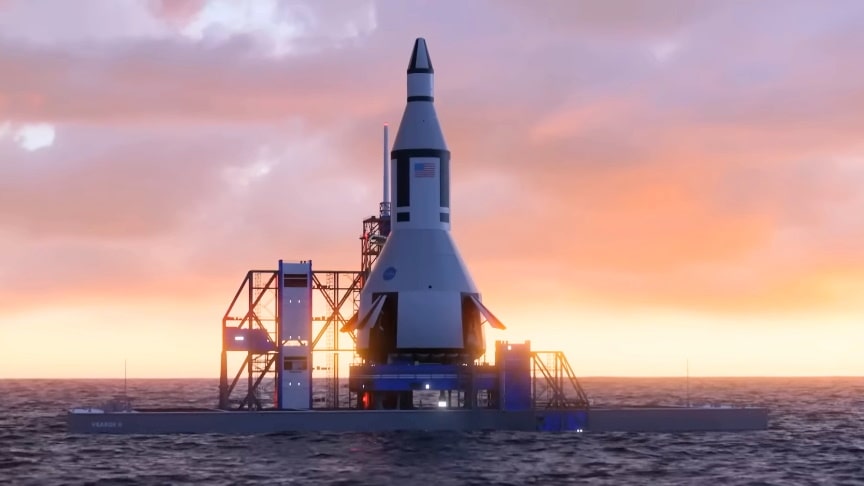In the early 1960s, as NASA was planning to go to the moon with the Saturn 5, engineers got to work planning out the possibility of a permant human presence on the moon.A 100 man moon base that would not only require 33,000 pounds of materials per earth year to run, but 3 and a half million pounds to construct -70 times than that of the then planned Orbital Space Shuttle.
source/image(PrtSc): Escape Velocity
Thus a new chemical fuel mega-rocket would need to be created. a Saturn 2.0 if you would, that would be able to launch a vast mass of payload into space – perhaps even nuclear upper stages. This was the Convair NexusIt would be a single stage to orbit vechelce that could carry one million poinds of payload. and was designed to be reuseable.
The nexus was a pretty squat rocket, with a tapered rocket stage up to the payload. This wide base gave it plenty of space for a large internal fuel tank of liquid hydrogen. This tank was in the shape of a cone rather than a sphere or cylinder, which allowed for seperate oxygen tanks, 24 of them, at the base – in a ring around the engines.
Advertisement
Down in the base there was also flaps to help control re-entry, but we will get to that in a moment. These fuel tanks supported a number of inficidualal high-pressy hudrogen oxygen rocket engines that could be developed from a number of programs at the time – allowing the rocket much needed flexability.The nexus rocket wasn’t going to rely on parachuts, nor would it use rockets like the space x rockets we have today – no it would simply rely on its vast surface area to slow itself down.//via read more: Escape Velocity











